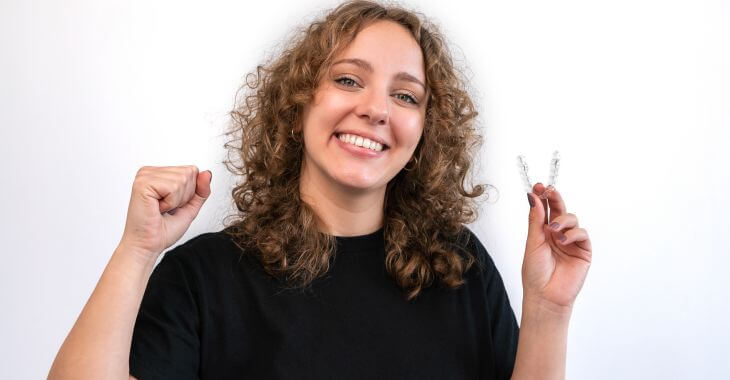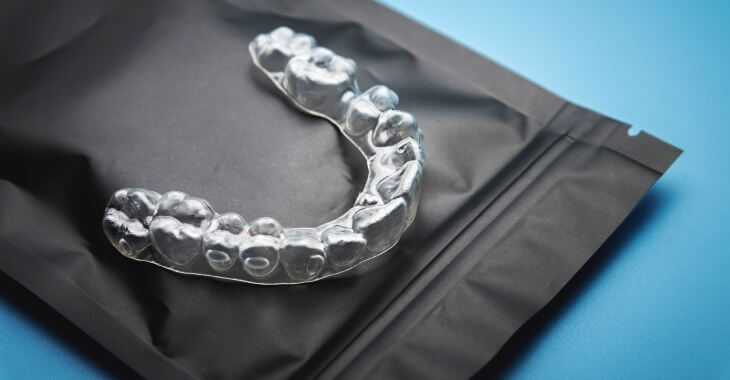Invisalign vs Smile Direct: What You Need to Know

If you have misaligned or crooked teeth, you may consider receiving orthodontic treatment. One of the most popular options for teeth straightening is Invisalign® clear aligners, but there are other treatments available like Smile Direct. Here is what you need to know about Invisalign vs Smile Direct.
Invisalign is the original inventor of clear aligner orthodontics. In the 1990s, Invisalign released their first adult clear aligners that were designed to straighten teeth without metal braces. They later also created Invisalign Teen, clear aligners designed for teenagers.
The selling point of Invisalign is that they are “invisible braces,” although they are aligners, not braces. Some of the benefits touted by Invisalign and the dentists that use them for straightening teeth include:
- Removeable for eating and cleaning teeth
- More comfortable than braces
- Discreet – no metal brackets or wires on the teeth
- Fast and effective orthodontic treatment
While Invisalign was the first option in clear aligners, they were followed by other companies that created similar products. Many are offered through dental offices, but one company provides orthodontic clear aligners through the mail – Smile Direct.
What Is the Difference Between Invisalign and Smile Direct?
When considering clear aligners, many potential patients compare Smile Direct vs Invisalign. Smile Direct is a new option for clear aligners, allowing patients to virtually perform their orthodontic treatment from home. This can seem alluring, especially when it comes to the price difference.
Before looking at the difference between Invisalign and Smile Direct, let us look at the similarities. Both Invisalign and Smile Direct are clear aligners and they have the same benefits over metal braces. They are almost invisible, more comfortable and convenient for eating or oral hygiene.
Both types of clear aligners are customized to fit your teeth, created by using a 3D scan at a dental office. The aligners fit over your teeth and slowly shift the teeth into the desired position. New aligners are issued every few weeks to bring the bite and teeth into alignment.
Smile Direct and Invisalign are both correct mild malocclusions and bite abnormalities, but Invisalign can also treat intermediate malocclusions. Neither are made for serious malocclusions, which require braces. Candidates for all clear aligners must be cleared by a dentist before treatment.
While both types of clear aligners seem similar, there are also some major differences. When comparing Invisalign vs Smile Direct, consider the following factors.
- Seeing the Dentist or Orthodontist
- One of the biggest differences between Invisalign and Smile Direct is how your treatment is performed. Both treatments require a visit to the dentist for an exam and 3D scan to confirm a patient is a good candidate, but some of the differences include:
- With Invisalign, you can choose your own dentist – Smile Direct, one is assigned to you.
- Invisalign requires frequent visits to the dentist for checkups. Smile Direct dental visits are performed virtually.
- Invisalign dentists carefully monitor alignment progress, which can catch complications.
- Smile Direct monitoring is remote, which is convenient, but more errors and complications can occur without physical examinations of the teeth.
- Many people like the idea of not needing to visit the dentist for their ongoing orthodontic treatment, which is possible with Smile Direct. However, if there is a problem during treatment, it may not get caught as quickly without regular examinations.
- Smile Direct vs Invisalign Cost Difference
- One of the biggest selling points of Smile Direct is that it is less expensive than Invisalign. This can make orthodontic treatment more affordable for many people – both the cost of treatment and fewer dentist appointments can save a significant amount of money.
- Smile Direct is less expensive, but only available for mild orthodontic issues
- Invisalign costs more, but it can correct more severe gaps or crooked teeth
- Smile Direct is performed mostly at home – Invisalign is performed at a dental office
- Smile Direct treatments may be shorter on average due to milder cases of malocclusion
- Invisalign has over 20 years of experience, Smile Direct was founded in 2014
Invisalign vs Smile Direct: Which is Right for You?
The biggest differences between Smile Direct vs Invisalign come down to the extent and quality of treatment. Smile Direct is supervised by a dentist, but patients will not get the in-person attention to check for any abnormalities or complications like they would with Invisalign. Other considerations:
Choosing which clear aligner option is right for you is a personal decision. Invisalign may be better for those with more significant bite issues, as the treatment is monitored closely by a dentist.

Clear aligners offer many benefits, but you want to choose the treatment that is right for your oral health. Talk to your dentist about the difference between Invisalign and Smile Direct to determine the best choice for your smile.
The information provided on this website, including text, graphics, images, and other materials, is intended solely for informational purposes and should not be used as a substitute for professional medical advice, diagnosis, or treatment.




)